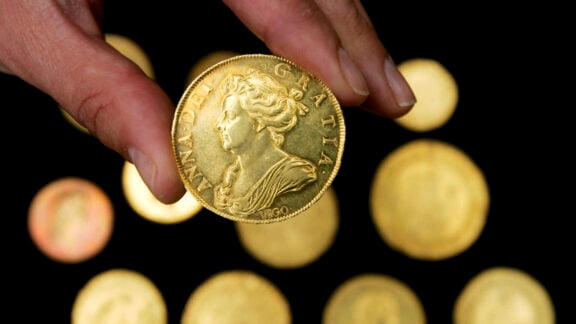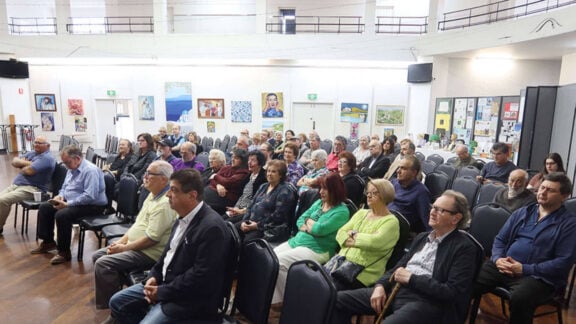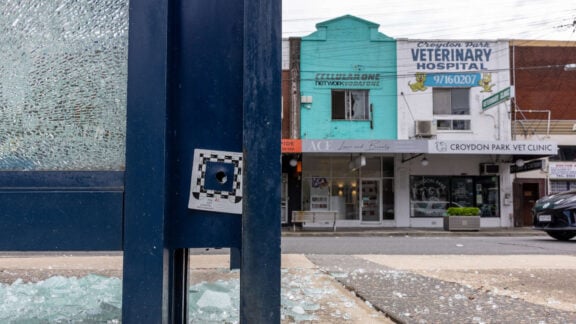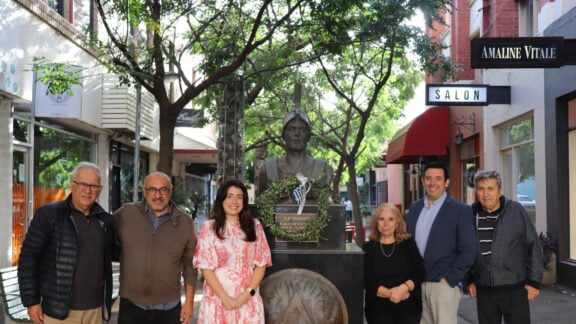The Parthenon has been voted the most beautiful building in the world according to Business Insider, followed by The National Congress of Brazil in Brasília, The São Paulo Museum of Art (São Paulo, Brazil) and The Forbidden City Temple in Beijing, (China).
Like paintings and sculptures, buildings can be beautiful works of art, therefore Business Insider asked architects to vote for the one building that in their opinion defines building design, inspired them to become architects, or that they simply consider to be a stunning piece of architectural art.
“The Parthenon is the quintessential beautiful architectural form,” Tara Imani, founding architect of Tara Imani Designs said of the most famous surviving building of ancient Greece.
“The Doric order, the use of entasis (a slight curve in columns) to make sure the columns didn’t look spindly from a distance … the siting on a hilltop − it gave us our initial ABCs of architecture that we keep trying to use and improve upon today,” she wrote.
The Parthenon (Greek: Παρθενών), which stands proud on the Acropolis of Athens, is Greece’s most precious gem, representing the cradle of democracy and to this day considered one of the most famous buildings in the world.
Directed by the Athenian statesman Pericles, it was built by the architects Ictinus and Callicrates under the supervision of the sculptor Phidias. Work began in 447BC, and the building itself was completed by 438BC.
The Parthenon has stood atop the Acropolis of Athens for nearly 2,500 years and was built to give thanks to Athena, the city’s patron goddess, for the salvation of Athens and Greece in the Persian Wars. The same year, a great gold and ivory statue of Athena, made by Phidias for the interior, was dedicated.
“Business Insider is one publication, albeit one with weight, but the Parthenon’s renown goes well beyond it and its opinion,” says acting director of the Australian Archaeological Institute at Athens, Dr Stavros Paspalas, in an interview with Neos Kosmos.
“The vote of Business Insider reinforces the position the temple holds in the minds of millions, but the Parthenon’s position as a milestone building and an architectural reference point predates that website. There is no doubt that the Parthenon is a cultural icon of worldwide significance, although I would further argue that the other surviving ruins on the Athenian Acropolis should not be forgotten; the Propylaia, the temple of Athena Nike and the Erechtheion along with the Parthenon create the visitor’s experience of the site.”
The Acropolis, and the Parthenon in particular, is the most characteristic monument of the ancient Greek civilisation and democracy, while it also symbolises the beginning of western civilisation and stands as an icon of European culture.
“The Parthenon has often been seen as the culminating point of ancient Greek architecture. Within that tradition, its proportions, its ornamentation and its optical refinements arguably represent the pinnacle achievement. Of course, what survives today is only a reflection of what the building would have been like in the fifth century BC, and some of its original features (such as the addition of colour) may surprise many today. Nonetheless, we can still appreciate its monumental grace,” says Dr Paspalas.
The history of the Acropolis of Athens is long, with the period when democracy, philosophy and art flourished leading to its creation. Then there were the times when its best standing pieces were removed and shipped away from the city, dividing the monument in two. Today, the international community wants to reunite all of the Acropolis sculptures in Athens and restore both its physicality and meaning.
According to Dr Paspalas, Parthenon’s historical significance can be divided into at least two strands.
“Firstly, the temple and the themes of its sculptural ornamentation allow us to gain insights into fifth-century Athenian society; into the concerns of the people who built it. We are in the fortunate position of having a number of ancient texts which throw further light on the building process and the political (indeed geopolitical) context in which it was erected.
“Secondly, the Parthenon, along with other ancient buildings, contributed in an inestimable way to the creation of various strands of Neo-Classical architecture in western and northern Europe and which was disseminated from there around the globe. Similar influence, of course was exercised by the temple’s sculptures. The building’s artistic impact in recent centuries has been immense.”
Today, the Parthenon attracts millions of tourists every year, who troop up the path at the western end of the Acropolis, through the restored Propylaea and up the Panathenaic Way to the Parthenon.
“When I am in Greece I live a few blocks away from the Acropolis. In all honesty I suspect that the vast majority of Greeks do not think about the Acropolis/Parthenon on a daily basis. However, they definitely see it as a symbol to rally around when needed, possibly as the most potent distillation of Greece and all things Greek. I suspect that Greeks in Australia think of it similarly (and possibly more often) − a motif which sums up so much of being Greek,” says 52-year-old Paspalas, who comes from the island of Kythera.
Historian and writer John Julius Norwich wrote once that the temple “enjoys the reputation of being the most perfect Doric temple ever built. Even in antiquity, its architectural refinements were legendary, especially the subtle correspondence between the curvature of the stylobate, the taper of the naos walls and the entasis of the columns,” he added.
In 1987, the monument was inscribed as a World Heritage Site (UNESCO, 1987). Uniquely, capturing the gravity of the Athenian Acropolis as a symbol, UNESCO recognises that “the Acropolis, the site of four of the greatest masterpieces of classical Greek art – the Parthenon, the Propylaea, the Erechtheum and the Temple of Athena Nike – can be seen as symbolising the idea of world heritage” (UNESCO, 2006).
“As I am not an architect nor a mathematician I can’t comment authoritatively on the optical refinements, such as the curvature of the temple’s elements which make its lines look straight, but I would like to note that many architects and archaeologists that have examined these issues, have − on the basis of their results − praised the ancient designers and builders and I don’t have any reason whatsoever to disbelieve them.
“The temple’s sculptures are sublime. The metopes mostly pictured various battles between Greeks and various foes, while the continuous relief which encircled the inner core showed a religious procession, more than likely the Athenians in their ‘Sunday best’. These works are truly magnificent. Even those carved by lesser masters are still exemplars which have inspired many generations of artists. The sculptors’ understanding of their subjects, principally the human body, is simply unrivalled. This knowledge and their technical skill were put to great effect and so produced these sculptural masterpieces,” explains Dr Paspalas.
When an independent Greece gained control of Athens in 1832, the area became a historical precinct. Today it is controlled by the Greek government, which is also responsible for managing the most valuable piece of art in Greece and which often faces challenges such as the latest Gucci campaign proposal to conduct a fashion parade on the Acropolis, which caused a lot of controversy before it was somewhat unsurprisingly rejected.
“Opinion on this issue is divided. I can see how many may have viewed the offer made by Gucci as disrespectful. I am sympathetic to the view that some distance should be maintained between symbols, in this case the Parthenon, in which peoples and nations have invested so much cultural importance on the one hand and the commercial world on the other,” says the acting director of the Australian Archaeological Institute at Athens.
“I do, however, also acknowledge that times change and so do opinions. It is well known that in the early 1950s Christian Dior was allowed to shoot publicity shots on the Acropolis. Clearly, a different set of standards was taken into account recently in relation to Gucci’s proposal.”
Dr Paspalas only has the highest praise for the Greek Ministry of Culture and everyone who has worked there since 1975 on the Acropolis conservation and restoration program.
“It has been, and continues to be, a truly Herculean task, and the teams at work on the Acropolis have produced dazzling results. Not only have they preserved the buildings but the conservation process has also given them the opportunity to re-examine them and new details have been learnt about them. It is a pity that the work of these dedicated archaeologists, engineers, scientists, technicians and stonemasons, which has received international recognition among their peers, is so little recognised among the wider public. I am certain that they will continue taking care of the Acropolis monuments in this exemplary fashion.”
So how do Greeks really feel about the country’s most iconic monument, and how much do they really appreciate it compared to the rest of the world?
“I think most Greeks take the Parthenon as a given. It is there; it has always been there. Most, when they think of it, feel some pride in it, even though a critical observer could comment that it doesn’t really encapsulate all Greek history. Despite this, in times of need I am certain that the Parthenon is very close to the hearts of most Greeks.
“The Parthenon is a monument around which they can all coalesce.”
To see the full list of the 22 most breathtaking buildings in the world, according to people who build them for a living, visit www.businessinsider.com/worlds-most-beautiful-buildings-2016-12//?r=AU&I…
For the Australian Archaeological Institute at Athens see sydney.edu.au/arts/aaia








